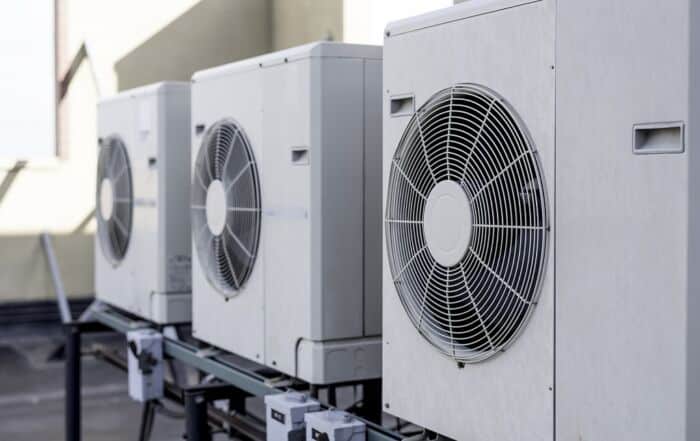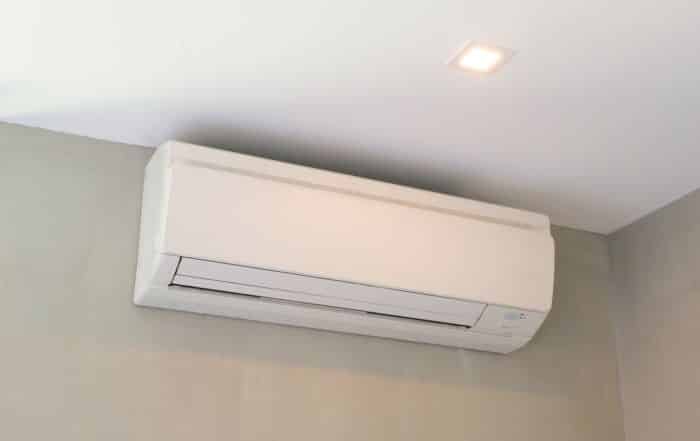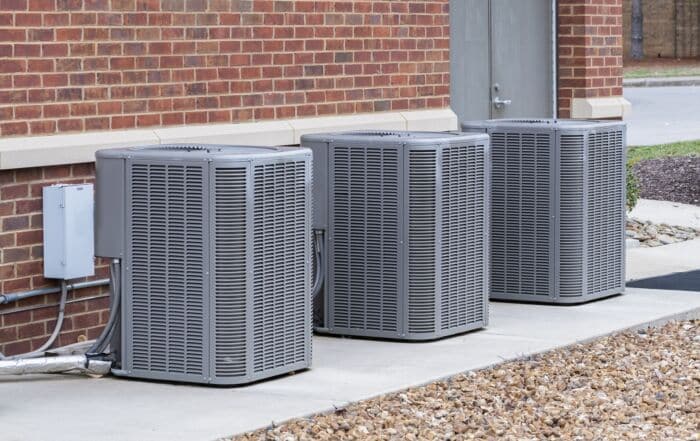Do you hear strange noises coming from your air conditioning system? Is the air flow not as strong as it used to be? If so, then troubleshooting air flow issues in your home's air conditioning system may be necessary. Air conditioning systems are complex and require regular maintenance to ensure they continue running properly. In this article, we'll provide an overview of how to troubleshoot and identify common air flow problems in your home's AC system.
Knowing how to troubleshoot your AC system can save you time, money and frustration. Often times, minor issues can be quickly identified and fixed without having to hire a professional technician. However, if any of the components of the system need replacing or repairs need to be made, it’s best to call a professional for help.
Whether you plan on doing some DIY work or hiring a professional for assistance, this article will provide you with the information you need about addressing common issues with your AC system's airflow. So let’s dive in and take a look at what needs fixing!
Kinked Ductwork
The air conditioning system in your home is like a well-oiled machine, and kinked ductwork can be the wrench that throws it off. Kinks can occur when sections of the ducts are bent or pinched, typically due to installation errors or damage from a pest problem. If you have noticed an unusually low airflow coming from your vents, one of the most common causes is kinked ductwork.
Checking for kinks in your ductwork doesn't require any special tools; simply inspect each section for signs of bending or pinching. If you find any kinks, try to straighten them out as best you can, making sure not to gently move them to achieve the desired flow.. If this doesn’t work, it may be time to call in a professional who can replace or extend the kinked section of the ductwork. From here, we'll move on to another potential problem with air conditioning systems: leaky ducts.
Leaky Ducts
Next, let's look at leaky ducts. Leaky ducts are one of the most common sources of air flow issues in an AC system. They can be difficult to detect since they often occur in areas that are hard to access, such as between walls or in ceilings. Leaks can also be caused by poor installation, loose connections and corroded seals. To inspect for leaks, you'll need to turn off the power to your AC unit and use a flashlight to look for signs of dust or airflow around any joints or seams. If you find a leak, it should be sealed with mastic tape or caulking compound as soon as possible.
If no leaks are found, it may be time to check your air filters. Clogged air filters can restrict the flow of air into the system, reducing efficiency and putting strain on the motor. It's important to replace your filter regularly – usually every three months – and make sure they're not too dirty when installing them back in place.
Clogged Air Filters
The summer sun blazes through the windows of your home. You long for the cool relief that you know your air conditioning system can bring, but instead you hear only a faint whisper of air coming from the vents. The air conditioner is not working as it should, and you must investigate further.
Clogged air filters are one of the most common causes of this issue. The filter works to remove dust and other particles from the air as it passes through, ensuring that clean air is circulated in your home. But if these filters become blocked with debris and dust, airflow will be significantly reduced, causing your AC system to work harder than necessary and reducing its efficiency. To fix this issue, start by replacing or cleaning the filters regularly according to the manufacturer's instructions.
Inadequate Return Air Pathways
Now that the clogged air filters have been addressed, it's time to investigate if there are issues with inadequate return air pathways. This can be caused by poor insulation in walls and attic, or blocked vents and registers. To identify this issue, you should inspect all of your ductwork inside the home and check for any obstructions or areas that need to be better insulated. If your system is old, it may also be helpful to get a professional inspection done to make sure your system is running efficiently.
In addition, you should also check for proper size and placement of return air grills throughout the house. The grills should not be too small or far away from the unit; otherwise they will not allow enough air flow into the system. With proper installation and maintenance, these problems can easily be prevented from occurring in the first place. Looking ahead, the next step is to examine any obstructed condenser unit outside of your home which could also affect airflow issues.
Obstructed Condenser Unit
Obstructed condenser unit is another common cause of air flow issues in air conditioning systems. An obstructed condenser unit can restrict the amount of air passing through the system, causing a decrease in efficiency and performance. This obstruction can be caused by dirt, debris, or even overgrown vegetation surrounding the unit. Make sure to keep the area around your condenser unit clean and free of any obstructions.
If you find that your condenser unit is blocked, remove any obstructions and check for any damage to the coils or fan blades. If there is damage, it will need to be replaced before operating properly again. If all else fails, consider calling an HVAC technician to come out and inspect your system for any potential problems that may be causing the obstruction. With this knowledge, they can help identify and resolve your air flow issues quickly and efficiently. Next we'll look at how an improperly designed or installed duct system can affect air flow.
Improperly Designed Or Installed Duct System
Ah, the joys of an improperly designed and installed duct system. Who doesn't enjoy a home that is full of hot air, uneven cooling and more? Let me paint a picture for you:
- Hot spots in certain rooms;
- Cold spots in other rooms;
- Blowing air from one room to another;
- Unbalanced temperatures throughout the house.
Yes, these are all signs of an improperly designed or installed duct system and can cause major issues with airflow in your home's air conditioning system. Making sure the duct system is properly designed and installed is essential to having a cool and comfortable home - not to mention energy efficiency! So be sure to have it professionally checked before experiencing any of the above mentioned problems that would otherwise make life unbearable this summer season!
Blower Fan Issues
Blower fan issues can lead to poor air flow in your home's air conditioning system. It's important to identify and address these problems before they worsen.
| Problem | Solution |
|---|---|
| Clogged filter | Replace filter |
| Dirty motor | Clean motor |
| Bent fan blade | Straighten blade |
| Worn out or loose fan belt | Replace fan belt |
The first step is to check the filter and replace it if it's clogged or dirty. Additionally, make sure that the blower motor is clean, as dust and debris can build up over time and prevent adequate air flow. If any of the fan blades are bent, you should straighten them with a suitable tool. This will help ensure that the blades move smoothly when running. Lastly, check for any loose screws or parts that could be causing instability in the fan assembly.
If all of these components are functioning properly, but air flow is still inadequate, then it may be a sign of damaged or worn fan belts which will require further investigation.
Damaged Or Worn Fan Belts
Many times, when the blower fan isn't working properly, it can be a sign of worn or damaged fan belts. It’s like trying to drive a car with a broken transmission: The engine is running but nothing is happening. Just like cars need functional transmissions to move the vehicle, air conditioners need functional fan belts to move air throughout the system.
Fan belts can wear out over time and cause several problems. If it's too loose, it won't move the fan efficiently, or if it's too tight, it may cause problems with other components in the system. Either way, this can lead to decreased airflow and cooling issues as well as potentially damaging other parts of the air conditioning system.
It is important to inspect your fan belt periodically for any signs of damage or wear. Check for fraying edges, cracks, tears and make sure that they are tensioned correctly. If you discover any issues with your fan belt, have an experienced technician replace it right away before further damage occurs. As soon as your new fan belt is installed, you'll notice an immediate improvement in airflow and cooling efficiency throughout your home's air conditioning system. From there, you can move on to inspecting the next component: dirty or frozen evaporator coils.
Dirty Or Frozen Evaporator Coils
If your air conditioning system's air flow is reduced, dirty or frozen evaporator coils may be the culprit. It's important to check for this problem if your unit has been running for a long time without being serviced. The evaporator coil is located in the indoor unit and can become clogged with dirt and dust over time. If left unchecked, it can cause the coil to freeze over, preventing cool air from entering your home. To prevent this from happening, you should regularly clean or replace the filter in your unit and check for any other signs of dirt buildup on the coils. A professional HVAC technician should be able to diagnose the issue and determine if it needs to be replaced or simply cleaned.
The next step in troubleshooting air flow issues in your home's AC system is to look for collapsed or disconnected ducts. Poorly insulated ducts are also prone to collapse due to pressure imbalances caused by changes in temperature or humidity levels inside the home. If you suspect that this may be an issue, contact a professional HVAC technician immediately to inspect and repair any damaged ducts before further damage occurs. With proper maintenance, these types of issues can easily be avoided.
Collapsed Or Disconnected Ducts
Now, let's move on to collapsed or disconnected ducts. These are common issues in homes with an air conditioning system. Ducts can become damaged due to wear and tear over time, or they may have been installed improperly. In either case, it's important to repair the issue as soon as possible. If the issue isn't corrected, air will not be able to flow properly throughout your home. This can result in uneven cooling and higher energy bills.
One way to identify a collapsed or disconnected duct is to look for obvious signs such as cracks, holes, or gaps in the ductwork. You may also hear strange noises coming from your air conditioning system when it is running. If you suspect that there is an issue with one of your ducts, it is best to contact a professional HVAC technician for assistance. They will be able to inspect the ducts and determine if any repairs need to be made before the air conditioning system can run efficiently again. With that said, let's move on to discussing zone control system issues in our next section.
Zone Control System Issues
Issues with your zone control system can cause problems with the air flow in your home's air conditioning system. These systems are designed to regulate the temperature of multiple rooms in a home. If one or more of the zones isn't working properly, it can impact the air flow throughout your home. You'll want to check that all of the dampers are open and working correctly to ensure proper air flow. Additionally, make sure that any thermostats within each zone are set correctly and communicating with their respective dampers. If any of these components aren't functioning as they should, it could be causing a disruption in the air flow throughout your home.
If none of these issues seem to be at fault, then it could be an issue with your air register or supply vent obstructions. Clogged or blocked vents can result in reduced airflow, so you'll want to make sure that all vents are clear and not obstructed by dirt or debris.
Air Register Or Supply Vent Obstructions
After troubleshooting your home's zone control system, the next issue to consider is air register or supply vent obstructions. This can be a common cause of air flow issues in an air conditioning system. The obstruction of the registers and vents can cause blockage of the circulation of conditioned air.
Here are three ways that this can occur:
- Objects blocking the vents
- Dust buildup on the inside of the registers
- Insufficiently sized ducts for large homes
Inspecting for obstructions will involve looking around the registers and vents for anything that may be blocking it, such as furniture or toys. It is also important to check for dust buildup and larger objects such as rugs blocking ventilation. Additionally, if your home has recently expanded, you should have a professional inspect the size and capacity of your ducts to make sure they are adequate enough to provide proper airflow throughout the house. Without these measures taken, uneven distribution of conditioned air can lead to pressure imbalances in different parts of your home.
Air Pressure Imbalances
Air pressure imbalances can cause air flow issues in your home's air conditioning system. To check for air pressure imbalances, use a manometer to measure the pressure difference between the supply and return sides of the system. If there is a significant difference—more than 0.5 inches of water column—it could be caused by a restriction in one or more places of the system, including the filter, ducts, or registers. It may also be caused by an unbalanced system from incorrectly sized components or poorly designed ductwork.
If this is the case, you should contact an HVAC professional to assess and address the issue. They may need to adjust or replace parts of your air conditioning system to ensure optimal performance and airflow. With their help, you can make sure that your home’s air conditioning system is running at its best capacity. This will improve energy efficiency and comfort levels in your home.
The next step is to examine any potential air leaks in the home that could be affecting your AC's performance.
Air Leaks In The Home
The summer sun beats down, radiating a sweltering heat. The air conditioning system kicks in, but fails to adequately cool the home. Air leaks in the home are one of the many possible causes of this issue.
Air leakage into a home is caused by any gaps or cracks located around doors and windows or in the walls or roofing. Gaps between the windows and their frames, as well as around door frames, should be sealed with caulking or weather stripping to ensure that no outside air is getting into the home. Additionally, any holes in walls and roofing should be patched up with insulation materials to prevent infiltration of outside air. Fixing these issues will stop any unwanted airflow from entering the home, allowing your cooling system to work more efficiently and effectively cool down your home.
Conclusion
In conclusion, our homes are meant to be comfortable respites from the outside world. But when our air conditioning systems aren’t working properly, it can feel like we’re living in a sauna! It’s frustrating, especially when you don’t know what’s causing the problem. Fortunately, with a little detective work and troubleshooting, most air flow issues can be fixed.
I found out the hard way that kinked ductwork, leaky ducts, clogged filters and inadequate return air pathways can all contribute to airflow problems. And even if these issues have been addressed, you still have to watch out for obstructed condenser units and zone control system issues. Who knew?
But hey, I guess that's why they call it "troubleshooting." It's a hassle sometimes but with patience and attention to detail it’s possible to identify and fix the issue so you can get back to enjoying your cool and comfortable home.
Related Posts
Exploring Ductless Air Conditioning Systems for Small Spaces
If you’re a homeowner tired of sweating through sweltering summers, a ductless air conditioning [...]
Signs Your Air Conditioning Unit Needs Professional Maintenance
Imagine coming home on a sweltering summer day only to find that your air [...]
Common Misconceptions About Air Conditioning Usage and Costs
Air conditioning units are a staple in many homes, especially during the hot summer [...]


